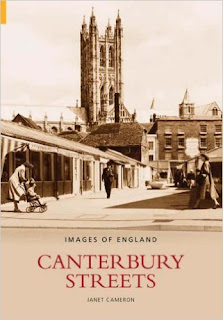 |
| Queen Victoria, Public Domain |
The typewriter
appeared in 1867, the first telephone that actually worked was produced by
Graham Bell in 1876, and, in 1879 London was the first city in Europe to have a
telephone exchange. The phonograph (a talking machine) appeared in 1879. (Apart
from its more obvious uses, it must have been a great wonder for Victorian
children from wealthier families, as it was used to produce talking books and
talking dolls).
By the end of the century, the automobile, the electric
tramcar, X-rays, the cinema and the wireless were also making great changes to
Victorian lives. Yet, in 1865, when the railways totalled around 100,000 miles
in length worldwide, with their Pullman carriages, and great steamships
carrying thousands of passengers sailed across the oceans, bicycles were still
very basic contraptions.
In the late 1840s, Stringfellow
built a model flying machine with a wingspan of 3 metres. Its light steam
engine enabled it to fly around 15 yards. But, after that, despite meticulous
research, determination and a great deal of financial outlay, little progress
was made in constructing an aeroplane capable of carrying a man.
The only inventor who made any real progress
was a Frenchman called Penaud who designed a monoplane with many modern
features including an automatic pilot, but sadly he committed suicide while
still very young and before his efforts reached fruition.
Dirigible airships
were invented in the 1870s, but as we now know, did not achieve lasting
success, as they were unreliable and dangerous.
Victorians began producing large
quantities of cast steel in the 1860s, resulting in the construction of great
bridges and structures, The Eiffel Tower, the Brooklyn and Forth Bridges were
all completed by the late 1880s.
Electricity too, was a new excitement at that
time, when Volta, in 1880 developed a source for electricity using acid and
metals. Following this came electric motors, dynamos, the electro-magnetic
telegraph and finally transformers, all of which came into general use by the
mid to late 1880s.
There
were also some rather curious inventions and these are just a few examples.
Around 1870, the Pedespeed was a kind of skating apparatus, which had stirrups
and foot pieces attached to wheels which operated on the outside of the leg and
measured about 14 inches in diameter. Ladies had to use shields to cover the
tops of the wheels to protect their dresses.
In 1883, a tricycle for two
persons appeared, with two enormous wheels at the sides and one smaller wheel
in front. Two people could ride in it side-by-side and one could imagine it
would be a charming spectacle to see two ladies riding in it wearing their
pretty dresses.
In 1869, people could cycle on the water in a strange boat-like
contraption with a bicycle constructed at the back. But the most curious of all
must be the Velocipide, a bicycle in a shallow tub attached to a shower
contraption. The cycle actually worked the shower pump so Victorians could get
themselves clean and have a morning workout at the same time.
The Victorian capacity for turning
imagination into invention was truly an extraordinary thing.
Brighton, Murders and Misedemeanours by Janet Cameron (Amberley Publishing)








